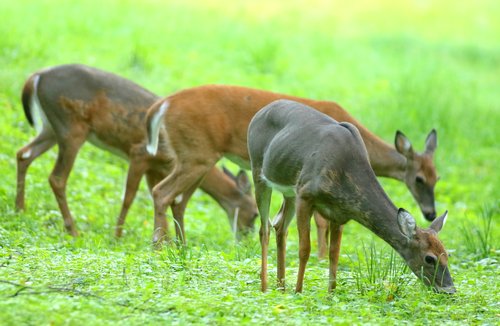Photographers, spectators, and hunters expect deer to be perfect examples of Wisconsin’s wildlife animal symbol, the white-tailed deer,

regardless of the season.
But each change has a transition; sometimes not so pretty, often short but necessary.
Throughout the year all ages and genders change appearance. While in tradition from winter to spring to summer and finally autumn this stately example may leave something to be desired, albeit ephemeral.
The new coats are so different, so impressive that one soon forgets the old.
Those transitions are usually short. In a couple weeks a deer’s coat can go from stately red to steel grayish brown, and does.
Fawn’s spotted coat does not change overnight. The white-tipped hairs that make up fawn spots slowly disappear and they look like mom when she gets finished losing her red, summer coat. The fawns, too will be more grayish brown.
Of course there is growing, but usually not noticed after the second spring.
It used to be that some of these changes made an early archery season deer almost off limits, such as a red coat or a few spots. It seems even the deer’s coat changes have now occurred sooner, earlier, and eliminated the necessity for reporting red deer or spotted fawns the a field warden.
In transition right now are spots losing more and more of their white-tipped hairs and joining the adults with a nearly homogeneous coat on their body’s top.
All deer are are losing summer coats. The new hairs are constructed for colder times ahead, hollow hairs for better insolation.
As they grow longer, the weather turns colder still.
Velvet covered antlers no longer look as elegant and large. The velvet is dying, drying, and falling and then finally rubbed from the bony understructure.
The once knobbed antlers are now pointed and in various shades from brown to near cream.
This is one of those times every animal in the herd, unless sickly, seems photogenic, attractive, and prized by hunters, photographers, and those who simply must store an animal in a mind’s eye.
Wisconsin’s white-tailed deer; a whitetail.






